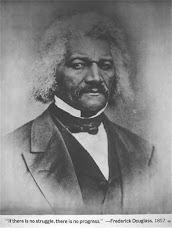
The most cogent explanation I've found of the much-talked-about (but less understood) congressional budget reconciliation process is from TalkingPointsMemo. TPM's Brian Beutler explains:
Each year, Congress passes a budget, but sometimes it has to enact a separate bill to raise or reroute funds in order to meet the budget's demands. That's the reconciliation bill--and it's so important that Senate rules exempt it from a filibuster. But they also prevent it from being a vessel for any old provision that the majority party wants enacted.
The specifics of these limits (enshrined in the so-called Byrd rule) are complex, but the overarching rule of thumb is that provisions passed through this process must have a significant budgetary component (i.e. involve the moving around of federal money) and that the legislation should not, in the long run, increase the federal deficit. (A recent historical example: the 2001 Bush tax cuts were passed via the reconciliation process. They survived the Byrd rule because they had a huge budgetary impact, but since they vastly increased the federal deficit, they sunsetted, and had to be renewed after five years.)
Thanks to Mimi @ Wounded Bird for blogging about the TPM post first and thus educating my formerly clueless self about reconciliation on so many fronts.
As Mimi points out:
[quoting from TPM]
. . . According to Martin Paone, a legislative expert who's helping Democrats map out legislative strategy, a more robust public option--one that sets low prices, and provides cheap, subsidized insurance to low- and middle-class consumers--would have an easier time surviving the procedural demands of the so-called reconciliation process. However, he cautions that the cost of subsidies "will have to be offset and if [the health care plan] loses money beyond 2014...it will have to be sunsetted."[Mimi then comments]
And there the irony continues: Some experts, including on Capitol Hill, believe that a more robust public option will generate crucial savings needed to keep health care reform in the black--and thus prevent it from expiring. But though that may solve the procedural problems, conservative Democrats have balked at the idea creating such a momentous government program, and if they defected in great numbers, they could imperil the entire reform package.
Let's see if I have this straight. If Democrats choose the more robust public option, they are more likely to be able to overcome the procedural hurdles and pass the bill on 51 votes without the threat of filibuster by the Republicans. The bill would also save money and perhaps pay for itself.
But the conservative Democrats may not stay on board, because they don't like the idea of a "momentous government program"? On what grounds? Read on. Because the Republicans in their pushback say that the public option would have to be "very aggressive in setting rates, price controls and rationing,". Ah, those are scary words to conservative Democrats.
On the other hand, those with no health insurance know rationing quite well.
So. As the author of the article, Brian Beutler says:
The path of least political resistance is beset by procedural obstacles; and the path of least procedural resistance is beset by political ones.
Got that everyone?||||||||||||||||||||||||||||||||||||||||||||||||||||||||||||||


















No comments:
Post a Comment